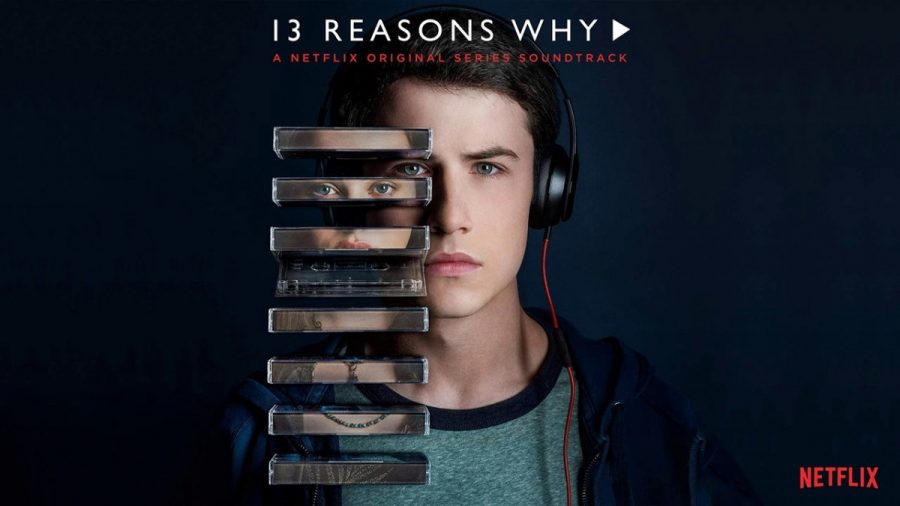Thirteen Reasons Why I wouldn’t watch it
May 28, 2018
Netflix has just released the second season of its original TV series Thirteen Reasons Why. The show follows the fallout in a community in the aftermath of the suicide of a teenage girl named Hannah Baker. The newest season has taken up the issue of school shootings along with other intense topics.
Season two takes place five months after Hannah Baker takes her life. Hannah’s parents decide to sue the school after the reluctance to take action with the knowledge that miss Hannah Baker experienced on and off campus bullying. The lawsuit takes place in an attempt to find some justice for Hannah and prevent any future instances for other students.
Similar to the last season however, the production of the televised show continues to make the same choice to glorify suicide, mental illness, and violence. The entirety of the show glamorizes serious issues that teenagers deal with every day. Problems are met with poor answers and only negative results in order to create more drama. Thirteen Reasons Why claims to be starting important conversations by addressing taboo issues, but it addresses those issues in a way that is both harmful and insincere, and cares more about shocking its teen audience than explaining to them why suicide isn’t the answer.
1. It glorifies suicide
The main issue of the show is a hard topic itself, but through the suicide of Hannah Baker, it suggests suicide as a good option and a poetic way to get revenge and sympathy. Throughout the show’s first season, Hannah leaves tapes behind as her suicide note, and uses them as a way to haunt the people she blames that pushed her over the edge, metaphorically speaking. Suicide is not poetic, and the things leading up to it are not beautifully tragic.
2. It uses self-harm but takes away the harsh reality of it all
Almost all aspects of the show that are supposed to be hard-hitting topics, are poorly represented. Self-harm is a form of pain infliction that can come in several forms, and usually escalates into worse solutions if not treated. In the show, Hannah turns to self harm, along with other characters when the pain of life is so great that they cause themselves physical pain.
3. It glorifies sexual assault
Issues like rape and assault are scattered throughout the entire show and are used in several of the interconnected storylines of the show. Hannah Baker, along with one of the supporting characters is raped with the horrific incidents included within the show. This issue, while relevant, is also very intense to talk about. The show does a poor job of bringing up the topic, and makes the mistake of putting it on camera, twice. According to Rainn.com , statistics show that there are an average of 321,500 victims ( 12 years or older) of rape each year, and this statistic only includes reported incidents. This issue is a widely understood evil and the show glorifies it as a plot device and a leading cause of suicide. It implies that suicide is a logical answer to assault, which can be a harmful idea for survivors.
4. It harmfully portrays mental illness
Mental illnesses, including anxiety, depression, ADD, ADHD, etc., affects a large portion of today’s youth. Thirteen Reasons Why uses mental illness as a plot device. Yet again another instance of the show glorifying serious issues and using them to give more shock factor and drama to the series. It also obscures mental illness and uses situational problems to create the illusion that Hannah is a sad depressed teenager, when in reality she is sad and spiraling, and needs help. The show also uses a gory suicide that can be very triggering for teenagers battling with certain mental illness, while claiming it was included in order to reach the target audience.
5. It uses the vulnerability of women as a plot device to create development in male characters
Clay Jensen, the lead protagonist, has a plot line based around how sad he is after his close friend and secret crush kills herself. The plot device plays into the trope of men being heroes and finding growth from the struggle and vulnerability of women. Hannah’s death is used as a plot device to grow the other characters, highlighting the men in the show.
6. It talks about “problems”, but portrays toxic masculinity
In today’s society, toxic masculinity is an ever-present idea that men have to behave a certain way to be seen as just that, a man. The show’s male characters all play into the social psychological norms that play into how men are supposed to be seen and behave. From “jocks”, to “loners”, all of the characters whose personalities are highlighted all share the similarity of being unable to express how they can feel in public and filling stereotypical male roles.
7. It shows a close female friendships broken up by a guy
This issue happens all the time in real life, but the choice in the show is shallow and poorly developed. We see characters Hannah and Jessica quickly befriend each other and soon after, grow a close emotional connection. However, this relationship is quickly lost when the make a third friend, a boy named Alex. This issue adds to the idea that boys and girls can’t be friends without adding an element of romance and sexuality.
8. Any relationship between a male and female character includes elements of needing more
Throughout the show, every male-female relationship also includes the idea that either one or both of the characters wants to take things to the next level. Any male-female friendship portrayed in the show suggests that the friendship was merely a cover to get closer to the other person in an attempt to create a romantic relationship. The basis of the show is built around the friendship between Clay and Hannah and how Clay secretly had feelings for her. After her death, he spends all of his time wishing he would have known so he could do one thing differently and save her.
9. It places blame
Hannah’s suicide places the blame on other people. It makes her suicide a revenge story and places the guilt on other people without ever taking a moment to reflect on ones actions. It’s written without any growth in the characters and never finds a silver lining or a happy ending. The show’s main motif is misery and how other people ruin one’s life without learning how you have more control over your life than anyone else. No one is held accountable for their actions, instead a web is continually spun, finding new ways to blame other people.
10. It makes revenge a good thing
Suicide is an “option” that is a permanent fix to a short term problem. Things will always get better if you reach out to a trusted adult or friend. Hannah Baker’s death is portrayed as a way for her to get back at all of the other characters who she believed to have ruined her life. Her story never gets better, but her death haunts the people who were made a part of it by her and never even knew their actions resonated so much with her. The whole show itself lacks communication and treats suicide and revenge as a legitimate solution to Hannah’s problems.
11. It sympathizes those who commit acts of gun violence
Within the subplots of the show, several scenarios show that the actions of the character can be justified by the cause of another character. Characters do despicable things and yet somehow it is all okay because someone else made them do it. No one is responsible for one character but that character. It condones the acts done within the show and allows them to be justified by excuse.
The producers of the show met up with specialists in the psychology field and even went against all advice, creating some highly violent and disturbing scenes that could negatively affect the shows’ young viewers.
12. Everything bad is made worse with technology
Technology has created a more connected world than ever. With this accessibility, there are pros and cons. The show has a history of focusing on the negative lights of a situation. The use of technology is evil, used to haunt people and make them feel the aftermath of Hannah’s death. It spreads rumors and lies and twisted truths, it only ever hurts people. This show leaves out the beauty in life and romanticizes the bad things, focusing on only using technology for the hurting and embarrassment of others.
13. Nothing ever gets better
Aforementioned in point 12, Thirteen Reasons Why likes to romanticize misery. Suicide, revenge, depression, mental illness, blame, abuse, the list goes on. In all of the subplots and interconnecting story lines, the drama only ever continues, there is no closure. The show cares more about generating drama than actually showing the process of healing and recovery from tragedy.











